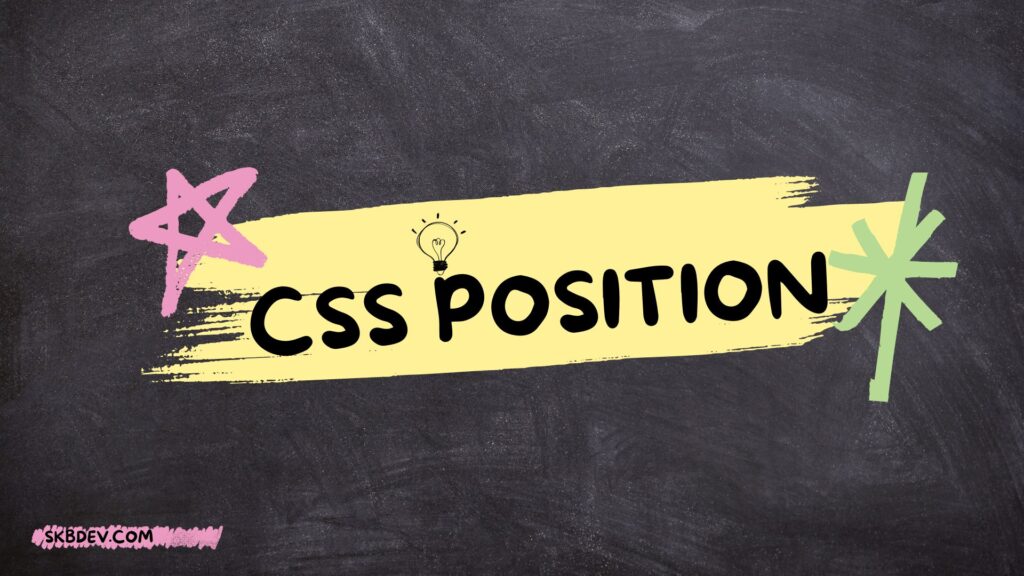CSS positioning is a fundamental aspect of web design that determines how elements are placed on a webpage. Mastering CSS positioning can significantly enhance the layout and responsiveness of your website, improving user experience and SEO performance. In this article, we will explore the different positioning types in CSS, their use cases, and best practices for effective implementation.

What is CSS Positioning?
CSS positioning refers to the way elements are positioned within a webpage. The position property in CSS controls the placement of an element, allowing developers to create dynamic and responsive layouts. There are five primary positioning types in CSS:
- Static
- Relative
- Absolute
- Fixed
- Sticky
1. Static Positioning
Static is the default positioning for all HTML elements. Elements with position: static; are placed in the normal document flow. This means they will appear in the order they are written in the HTML, without any offsets.
Use Cases:
- Basic layouts where no special positioning is required.
2. Relative Positioning
Elements with position: relative; are positioned relative to their original location in the document flow. You can adjust their position using the top, right, bottom, or left properties.
Use Cases of CSS Positioning:
- Creating overlapping elements.
- Adjusting the position of elements without affecting the layout of surrounding elements.
3. Absolute Positioning
When an element is given position: absolute;, it is removed from the document flow and positioned relative to the nearest positioned ancestor (i.e., an ancestor with position set to anything other than static). If no such ancestor exists, it will be positioned relative to the initial containing block (usually the viewport).
Use Cases of CSS Positioning:
- Tooltips, dropdown menus, or modals that need to appear above other content.
4. Fixed Positioning
Elements with position: fixed; are positioned relative to the viewport, meaning they stay in the same place even when the page is scrolled. This is useful for elements like headers or footers that should remain visible at all times.
Use Cases:
- Navigation menus that stick to the top of the page during scrolling.
5. Sticky Positioning
position: sticky; is a hybrid of relative and fixed positioning. An element with this property toggles between relative and fixed, depending on the scroll position. It behaves like a relative element until it reaches a specified scroll position, at which point it becomes fixed.
Use Cases:
- Headers that become fixed when scrolling down a page.
Best Practices for CSS Positioning
- Understand the Flow: Always consider the document flow when choosing a positioning type. Use
relativeandabsolutecarefully to avoid unexpected overlaps. - Test Responsiveness: Ensure that your positioning choices maintain the integrity of your layout across different screen sizes and devices.
- Minimize Overlapping: Overlapping elements can lead to confusion for users and negatively impact accessibility. Use z-index judiciously.
- Use Comments: When using complex positioning, add comments to your CSS for clarity, especially for future maintenance.
Conclusion
CSS positioning is a powerful tool in web design that can create visually appealing and functional layouts. By understanding the different positioning types and their appropriate use cases, you can enhance the user experience on your website while optimizing for SEO. Implement these techniques thoughtfully, and your website will not only look great but also perform well in search engine rankings.
For more contact us and check out our Youtube Channel.

I very delighted to find this internet site on bing, just what I was searching for as well saved to fav
Sky Scarlet This is my first time pay a quick visit at here and i am really happy to read everthing at one place
Blue Techker Nice post. I learn something totally new and challenging on websites
Lois Sasson I just like the helpful information you provide in your articles
Your blog is a treasure trove of valuable insights and thought-provoking commentary. Your dedication to your craft is evident in every word you write. Keep up the fantastic work!
Clochant very informative articles or reviews at this time.
certainly like your website but you need to take a look at the spelling on quite a few of your posts Many of them are rife with spelling problems and I find it very troublesome to inform the reality nevertheless I will definitely come back again
“Your writing style is engaging and clear, love it!”
Your writing has a way of resonating with me on a deep level. I appreciate the honesty and authenticity you bring to every post. Thank you for sharing your journey with us.
BWER Company is Iraq’s leading supplier of advanced weighbridge systems, offering reliable, accurate, and durable solutions for industrial and commercial needs, designed to handle heavy-duty weighing applications across various sectors.
Hello my loved one I want to say that this post is amazing great written and include almost all significant infos I would like to look extra posts like this
I was recommended this website by my cousin I am not sure whether this post is written by him as nobody else know such detailed about my difficulty You are wonderful Thanks
I loved as much as youll receive carried out right here The sketch is tasteful your authored material stylish nonetheless you command get bought an nervousness over that you wish be delivering the following unwell unquestionably come more formerly again since exactly the same nearly a lot often inside case you shield this hike
Hi i think that i saw you visited my web site thus i came to Return the favore I am attempting to find things to improve my web siteI suppose its ok to use some of your ideas